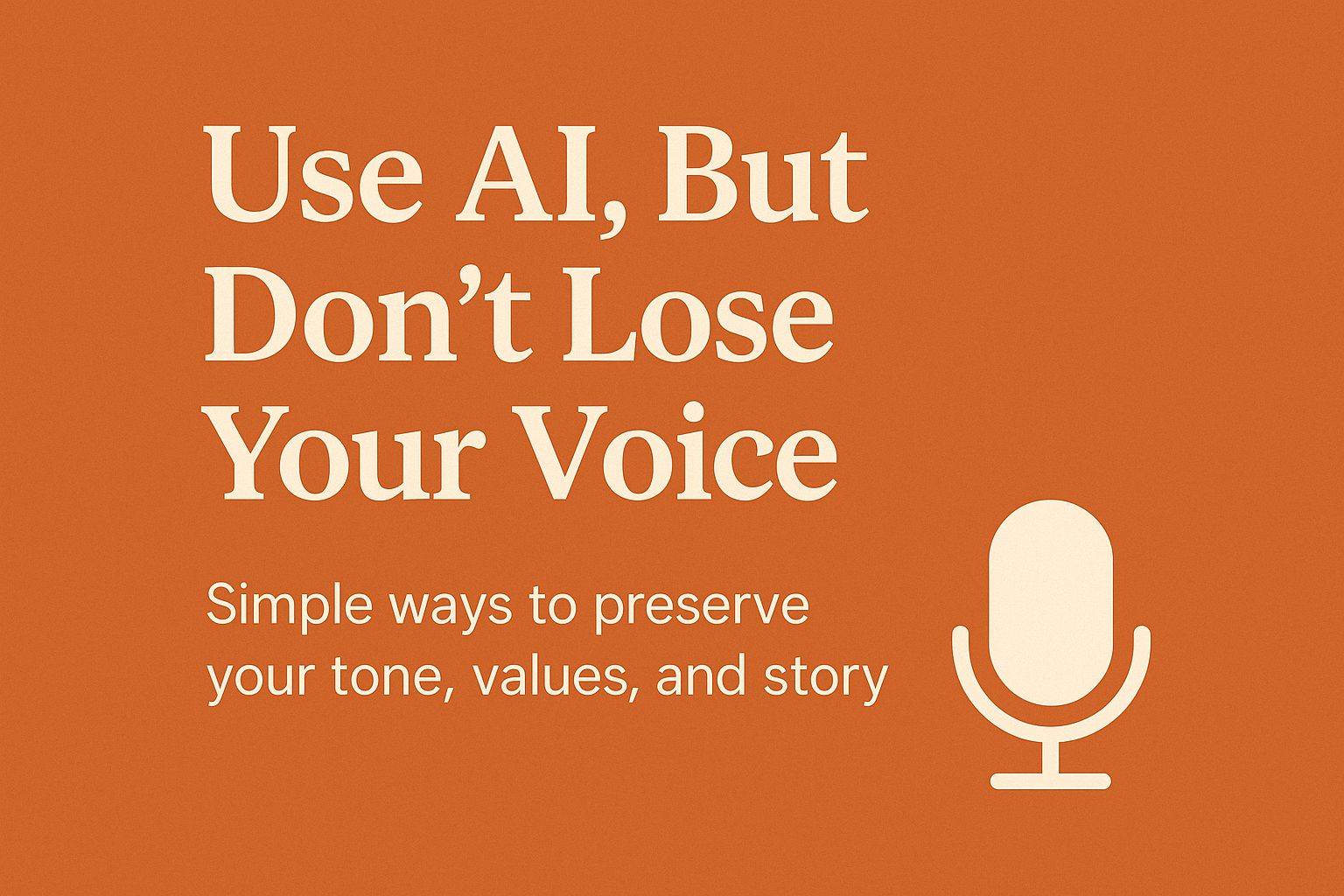→ Simple ways to preserve your tone, values, and story in an AI-driven world
Set the Expectation
AI is powerful. It can save you hours of work, boost your creativity, and even write like a human. But here’s the truth: it doesn’t know you. It doesn’t carry your story, your values, or your voice.
And here’s a growing concern: homogenization—the tendency for AI-generated content to sound the same across users.
A growing body of research has shown that large language models can produce outputs that are more similar to each other than to human-generated content, especially when using the same model repeatedly. This tendency toward similarity reflects a limitation in AI creativity, where responses may lack the diversity and originality found in human expression. As reliance on AI for creative tasks increases, there is concern that writing may become more polished but also more uniform and predictable.
This is one of the potential downsides of extensive AI-generated content: individual voices and unique styles might diminish, reducing the overall diversity of expression.
This post isn’t anti-AI. I use AI daily—and love it. But if you’re a founder, leader, creator, or thinker trying to build something meaningful, your unique voice is part of your value.
So how do you use AI without losing yourself?
How do you let it amplify your voice, not flatten it?
Let’s break it down with clear, practical steps.
1. Know What Your Voice Sounds Like
Before you can preserve your voice, you have to know it.
Ask yourself:
- How do I normally speak or write? (Formal? Friendly? Witty? Soulful?)
- What values are non-negotiable in my communication?
- What phrases, metaphors, or stories do I often return to?
Pro tip: Look back at your best-performing emails, posts, or talks. Highlight phrases or lines that “sound like you.” This becomes your style guide.
2. Start with Your Rough Draft First
Tempting as it is to ask ChatGPT or another AI to “write this for me,” try this instead:
Start with your own messy version. A voice note. A brain dump. Bullet points. A paragraph.
Then, feed that into AI and ask it to:
- Clean it up, but keep your tone
- Expand your ideas, not replace them
- Offer suggestions—not write from scratch
This way, you’re not outsourcing your voice. You’re just hiring a really smart editor.
3. Give the AI Your Voice (Literally)
Most AI tools are blank slates. But you can train them.
Try this prompt:
“Here’s a blog post/email/tweet I wrote. Use this as a tone and writing style guide. Anytime I ask you to write something, follow this voice: warm, insightful, and a bit playful, with clear calls to action.”
You can even paste in a few samples of your writing so the AI gets your rhythm and voice.
4. Inject Your Story, Always
Your story is your signature. AI can’t replicate your childhood memory, your startup journey, or that one mistake that taught you everything.
Every piece of content should carry a personal fingerprint. Drop in a moment, insight, or reflection from your life or work.
AI makes things clear. You make things real.
5. Set Guardrails for Your Values
Want to make sure AI reflects your ethics and mission? Tell it.
Example:
“I’m writing this to empower small business owners, not make them feel behind. Keep the tone encouraging, not salesy. I care about authenticity and clarity—no gimmicks.”
AI will follow your lead. But you have to lead.
6. Edit Like a Human, Not a Machine
Once AI gives you a draft, don’t just copy-paste. Read it aloud. Ask:
- Does this sound like me?
- Would I actually say this in real life?
- Is this adding value—or just filling space?
Editing is where your voice sharpens. Let AI write fast. You slow it down with meaning.
7. Don’t Be Afraid to Break the AI Mold
AI often plays it safe. It’s smooth—but can be soulless.
So don’t be afraid to:
- Use that slang you love
- Write an unfinished sentence for effect
- Start with a question
- End with a mic-drop line that’s 100% yours
Your quirks are often your human advantage. Lean into them.
Final Thoughts: Use AI Like a Mic, Not a Mask
Think of AI like a microphone—it amplifies what’s already there. But it won’t give you a voice you didn’t already have. That part? That’s on you.
So yes, use the tools. Get help with structure, grammar, and clarity.
But never forget the power of your voice. It’s your competitive edge, your calling card, and your connection to others.
Use AI. But stay human.
Because the world doesn’t just need more content. It needs you.
Want to Go Deeper?
I’m building resources to help professionals thrive without losing themselves in the age of AI. Subscribe to keep getting insights like this.


